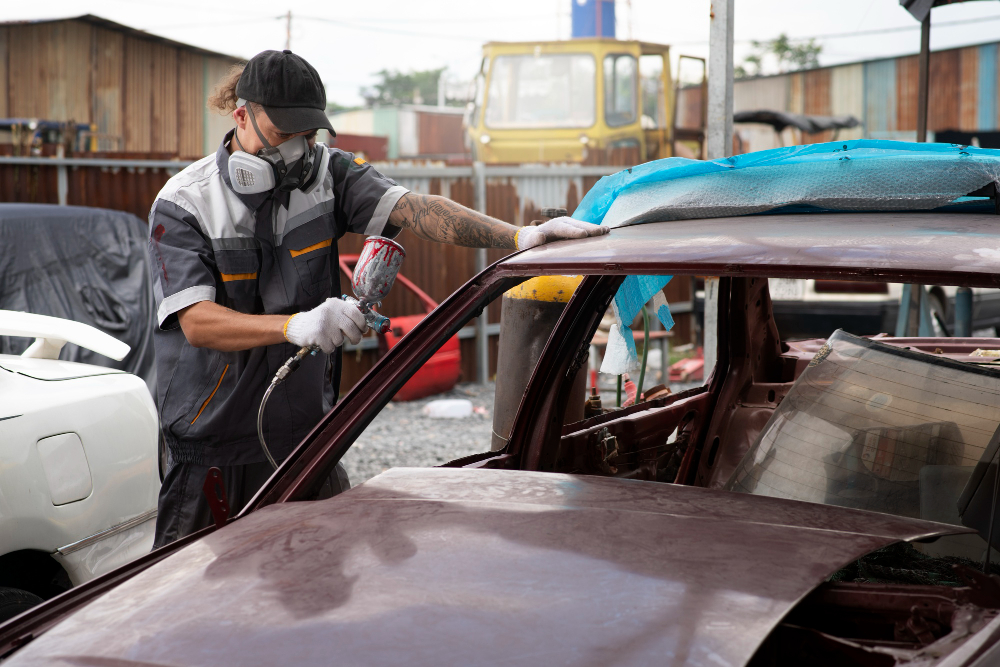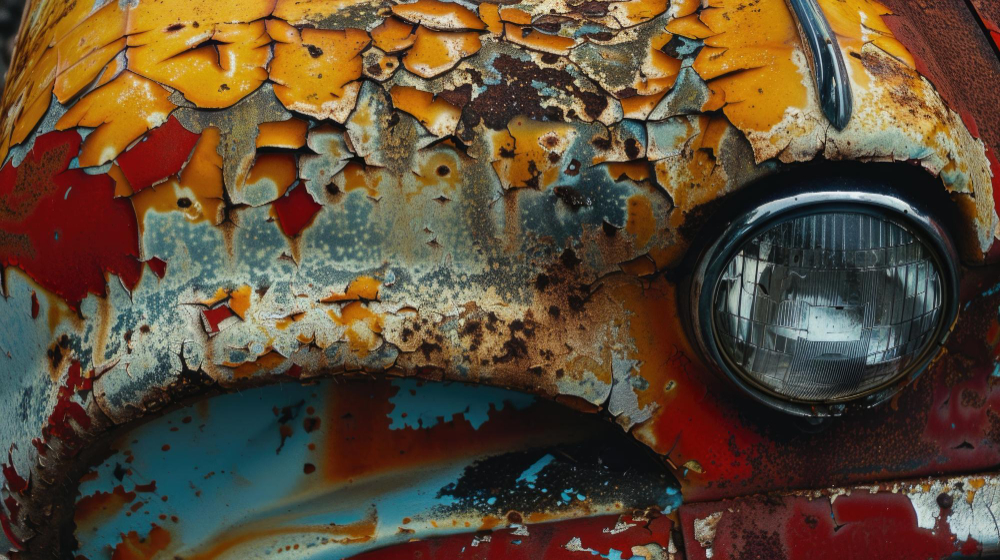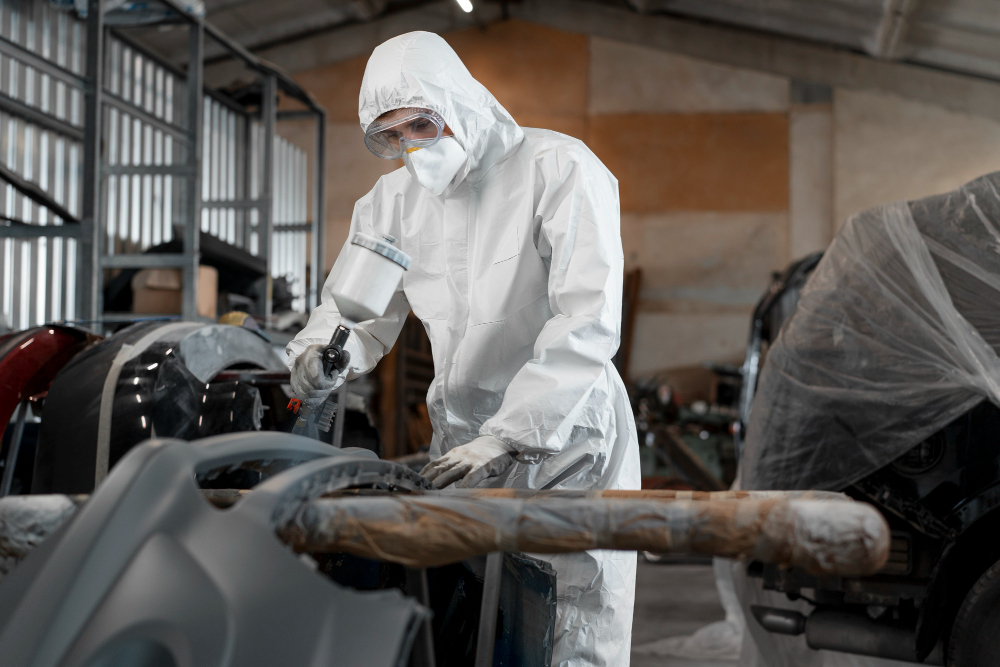Strategies to combat Corrosion in the Automobile Industry
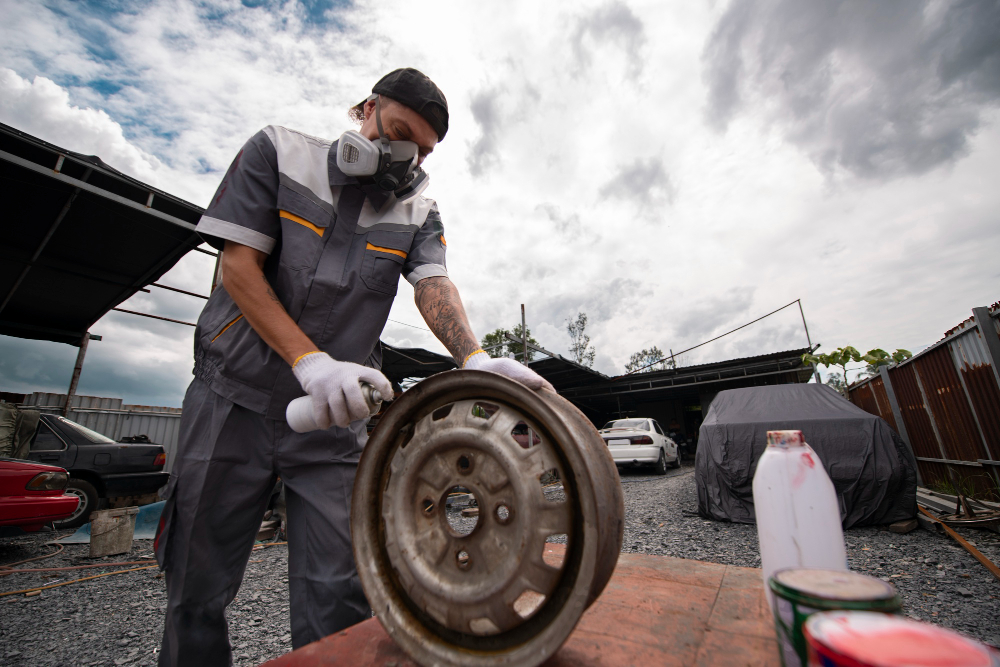
Corrosion in the automobile industry represents a pervasive challenge that demands meticulous attention and proactive measures. Defined as the gradual degradation of metal components due to environmental factors, corrosion poses multifaceted implications for vehicle safety, aesthetics, and economic viability. In this context, understanding the precise nature of corrosion and its ramifications is indispensable for stakeholders across the automotive ecosystem.
This paper explores the nuanced dimensions of corrosion in the automobile industry, elucidating its definition, significance, and the imperative for comprehensive mitigation strategies. By delving into these facets, we endeavor to underscore the critical importance of addressing corrosion in automobiles to uphold safety standards, preserve aesthetics, and optimize operational efficiency in the dynamic landscape of automotive manufacturing and usage.
Definition of corrosion in the automobile industry context
In the realm of the automobile industry, corrosion refers to the gradual deterioration or wearing away of metal components due to chemical reactions with their environment. This process often occurs when metals are exposed to moisture, salt, pollutants, and other environmental factors, leading to rust formation and structural weakening of vehicle parts.
Addressing corrosion in the automobile industry is of paramount importance for several reasons. Firstly, corrosion poses a significant safety hazard, as it can compromise the structural integrity of vital vehicle components such as chassis, frame, and suspension systems. Moreover, corrosion undermines the aesthetic appeal and resale value of automobiles, impacting both manufacturers and consumers.
Types of Corrosion in Automobiles
Surface Corrosion: Occurs when the surface of metals deteriorates due to exposure to environmental factors such as moisture, oxygen, and pollutants, leading to rust formation.
Galvanic Corrosion: Results from the electrochemical reaction between dissimilar metals in the presence of an electrolyte, accelerating the corrosion process, commonly seen in automotive components made of different metals.
Pitting Corrosion: Characterized by localized corrosion spots or pits on metal surfaces, often caused by localized breakdown of protective coatings or exposure to aggressive environments.
Crevice Corrosion: Corrosion in the Automobile Industry” often occurs in narrow gaps or crevices where stagnant solutions form, leading to accelerated corrosion due to differences in oxygen concentration or pH within the crevice.
Stress Corrosion Cracking (SCC): Corrosion in the Automobile Industry can manifest as the combined influence of tensile stress and a corrosive environment, leading to the formation and propagation of cracks in susceptible materials, often observed in automotive structures under mechanical load and exposure to corrosive agents.
Environmental Corrosion: Corrosion in the Automobile Industry” encompasses various environmental factors such as road salt, humidity, pollutants, and temperature fluctuations, all of which contribute to the corrosion of automotive components over time. This phenomenon is particularly prevalent in regions with harsh climates or road conditions.
Causes of Corrosion in Automobiles in the Automobile Industry
Exposure to Environmental Elements
Moisture: Constant exposure to moisture, such as rain and condensation, can accelerate corrosion processes.
Road Salt and Deicing Chemicals: Chemicals used for deicing roads can lead to accelerated corrosion, especially in regions with heavy snowfall.
Humidity: High humidity levels can promote the formation of rust on metal surfaces, particularly in enclosed spaces.
Temperature Variations: Fluctuations in temperature can contribute to the expansion and contraction of metal, exacerbating corrosion.
Material Composition
Steel vs. Aluminum: Differences in the composition of metals used in automobile manufacturing can impact susceptibility to corrosion.
Alloy Selection: The choice of alloys in manufacturing affects the corrosion resistance of automobile components.
Coating Quality: The quality of protective coatings applied to automobile surfaces influences their ability to resist corrosion over time.
Design Factors
Water Traps: Poor design elements that allow water to accumulate in certain areas of the vehicle can accelerate corrosion processes.
Poor Drainage: Inadequate drainage systems can lead to the buildup of water and moisture, promoting corrosion in vulnerable areas.
Aerodynamics: Certain design features that impact airflow around the vehicle can influence how environmental elements interact with its surfaces, potentially affecting corrosion rates.
Effects of Corrosion on Automobiles
Structural Integrity
Weakening of Body Panels: Corrosion in the Automobile Industry gradually eats away at body panels, compromising the vehicle’s structural strength. This deterioration increases vulnerability to impacts and reduces overall durability.
Rust Perforation: Corrosion in the Automobile Industry can have severe consequences. When corrosion penetrates the metal, it can lead to rust perforation, weakening critical components and potentially compromising the vehicle’s overall structural integrity.
Safety Concerns
Compromised Crashworthiness: Corrosion in the Automobile Industry weakens structural components, diminishing the car’s ability to withstand impacts during collisions. This compromises the vehicle’s crashworthiness and increases the risk of injury to occupants.
Brake and Suspension System Damage: Corrosion can affect crucial safety systems like brakes and suspension. Rust on brake components may reduce braking efficiency, while corrosion in suspension parts can lead to instability and loss of control, posing grave safety hazards.
Aesthetic Degradation
Paint and Surface Damage: Corrosion manifests as paint bubbling, peeling, or flaking, resulting in unsightly blemishes on the vehicle’s surface. This deterioration not only diminishes the car’s appearance but also accelerates the spread of corrosion.
Visible Rust Spots: Corrosion in the Automobile Industry is a significant concern, as evidenced by the rust spots marring the vehicle’s exterior. These blemishes not only detract from the aesthetic appeal of the automobile but also potentially reduce its resale value.
Corrosion Prevention and Control Measures
Improved Material Selection: Advancements in material science play a crucial role in combating corrosion in the automobile industry. By leveraging metals and alloys with inherently higher corrosion resistance, such as stainless steel or aluminum alloys, manufacturers can significantly mitigate the risks associated with corrosion.
Enhanced Coatings and Paint Technologies: In the automobile industry, coatings and paints play a crucial role in protecting metal surfaces from corrosion. Innovations such as cathodic electrocoating and nano-ceramic coatings provide superior protection against corrosion, prolonging the lifespan of vehicles.
Galvanization and Surface Treatments: Galvanization, where a protective zinc layer is applied to steel surfaces, is widely used in the automobile industry to prevent corrosion. Additionally, surface treatments like phosphating and anodizing create a barrier against corrosive agents.
Regular Maintenance and Inspection: Corrosion in the Automobile Industry” Implementing routine maintenance schedules and inspection protocols is essential for early detection and prevention of corrosion in automobiles. This includes checking for signs of rust or damage to protective coatings and addressing them promptly.
Design Modifications for Corrosion Resistance: Incorporating design features that minimize moisture accumulation and promote airflow can help prevent corrosion in vulnerable areas of vehicles. Designing drainage channels and sealing joints effectively can also reduce the risk of water penetration, a common cause of corrosion.
Innovations in Corrosion Prevention for Automobiles
Corrosion in the automobile industry remains a significant challenge, prompting ongoing advancements in preventive technologies. Here are some innovative approaches:
Advanced Coating Technologies: Advanced coating technologies have emerged as a frontline defense against corrosion in automobiles. These coatings, often incorporating polymers and ceramic nanoparticles, provide a robust barrier against moisture and environmental contaminants, thus extending the lifespan of automotive components. Manufacturers are continuously refining coating formulations to enhance durability and resistance to abrasion, ensuring long-term protection against corrosion.
Nanotechnology Applications: Nanotechnology has revolutionized corrosion prevention in the automobile industry by enabling the development of nanostructured materials and coatings with exceptional anti-corrosive properties. Nanoparticles, such as graphene and titanium dioxide, are incorporated into coatings to create ultra-thin protective layers that effectively shield metal surfaces from corrosive agents.
Corrosion-Resistant Materials Development: Corrosion in the automobile industry presents significant challenges, driving the need for advancements in material science to enhance the longevity and durability of automotive components. By focusing on the creation of materials that can withstand harsh environmental conditions, manufacturers aim to reduce maintenance costs and improve vehicle safety and reliability.
Smart Coatings and Sensors: Smart coatings embedded with corrosion sensors represent a cutting-edge approach to corrosion prevention in automobiles. These coatings contain embedded sensors capable of detecting early signs of corrosion, allowing for timely intervention to mitigate potential damage.
Regulatory Standards and Industry Guidelines
Compliance Requirements In the automotive sector, adherence to regulatory standards is paramount, particularly concerning safety, emissions, and performance. Regulations imposed by governing bodies ensure that vehicles meet minimum safety requirements and environmental standards. Additionally, with the increasing focus on sustainability, regulations related to fuel efficiency and emissions have become more stringent.
Testing and Certification Processes Testing and certification processes play a vital role in ensuring the quality and safety of vehicles, including their resistance to corrosion. For automobiles, various tests are conducted to evaluate the durability of materials and coatings against corrosion caused by environmental factors such as moisture, salt, and chemicals used for road treatment.
Industry Best Practices Incorporating industry best practices is essential for automotive manufacturers to mitigate corrosion risks effectively. These practices encompass the selection of corrosion-resistant materials, such as stainless steel, aluminum alloys, and galvanized coatings, in critical vehicle components. Furthermore, implementing robust corrosion prevention strategies during the design and manufacturing stages can significantly enhance the longevity of automobiles.
Closing Insights
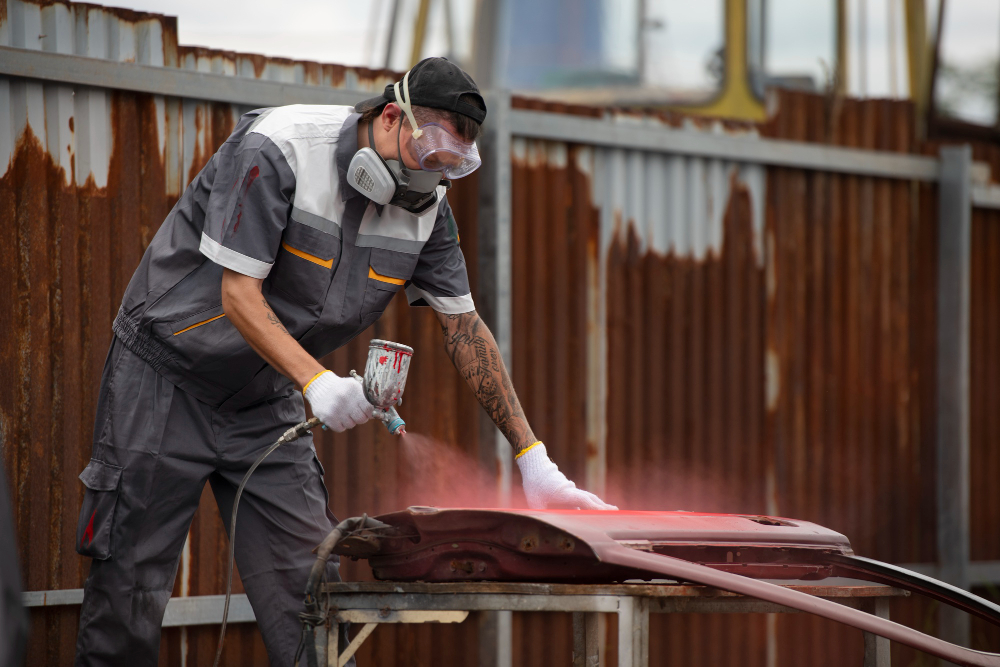
addressing corrosion in the automobile industry is paramount for ensuring the safety, longevity, and performance of vehicles. Corcon Institute of Corrosion remains dedicated to advancing knowledge and solutions in corrosion prevention and control, particularly in the context of automotive applications. By understanding the types, causes, and effects of corrosion in automobiles, manufacturers and industry professionals can implement proactive measures to mitigate risks and preserve vehicle integrity.
Through continuous research, education, and collaboration, Corcon aims to empower the automotive sector with innovative technologies, best practices, and regulatory insights to combat corrosion effectively. By prioritizing corrosion resistance in material selection, design considerations, and maintenance protocols, the industry can enhance customer satisfaction, reduce maintenance costs, and uphold safety standards.
Image Reference: Freepik
Disclaimer: All trademarks, logos, and brand names are the property of their respective owners. All company, product, and service names used in this website are for identification purposes only. Use of these names, trademarks, and brands does not imply endorsement.
